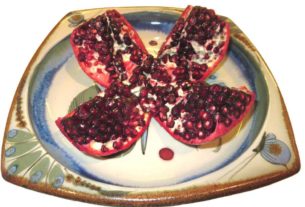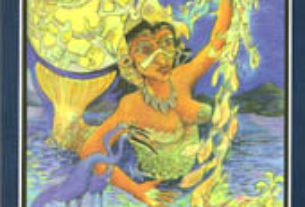Did You Know…?
Father Alonso Ponce and Friar Antonio de Ciudad Real were probably Mexico’s first ever tourists.
 Father Alonso Ponce de León arrived in Veracruz in September 1584 and spent the next five years traveling to every corner of New Spain as Visitor of the Franciscan Provinces. In this time, he visited all 166 Franciscan monasteries in the colony, as well as several monasteries run by Dominicans, Augustinians and Jesuits.
Father Alonso Ponce de León arrived in Veracruz in September 1584 and spent the next five years traveling to every corner of New Spain as Visitor of the Franciscan Provinces. In this time, he visited all 166 Franciscan monasteries in the colony, as well as several monasteries run by Dominicans, Augustinians and Jesuits.
His “grueling inspection tour” came at a time when the missions were mired in conflicts, both internal and external. Fortunately for us, Ponce’s secretary, Antonio de Ciudad Real traveled everywhere with him, and left us an amazingly detailed account of their trips.
Born in Spain, Ciudad Real entered the Franciscan monastery of San Juan de los Reyes in Toledo in 1566 at the age of 15. In 1572, he was sent as a chorister to the Yucatan to accompany Diego de Landa, who was consecrated as Bishop of Yucatan the following year. He rapidly became fluent in spoken Maya and exhibited considerable curiosity about the life and customs of the region. By 1584, Ciudad Real was back in Texcoco, near Mexico City, convalescing from fevers that had plagued him for several years.
When Ponce arrived, he appointed Ciudad Real as his secretary for his inspection tour of the missions throughout New Spain. Five years later, they returned to Europe. Ciudad Real’s account of Ponce’s travels was undoubtedly written while in Europe. After Ponce’s death, Ciudad Real crossed the Atlantic once more in 1592, and spent most of the remainder of his life in the Yucatan. He passed away on June 5, 1617, in the monastery at Mérida.
The account of their travels bears the title Tratado curioso y docto de las grandezas de la Nueva Espana: Relacion breve y verdadera de algunas cosas de las muchas que sucedieron al padre fray Alonso Ponce en las provincias de la Nueva España, siendo comisario general de aquellas partes. ( Curious and learned treatise on the splendors of New Spain: Brief and true account of some of the many things that happened to Father Alonso Ponce in the provinces of New Spain, when he was General Commissary of those parts). It was first published in Madrid in 1872.
While the Yucatan section of this work has been previously translated into English, it appears that no translations of other regions have ever been published.
Ciudad Real’s detailed account of Ponce’s visits is an outstanding source for the history and geography of the colony in the second half of the sixteenth century. It includes information about the basic geography, climate, resources and human settlement of the area from as far north as present-day Nayarit to as far south as Nicaragua.
The depth and nature of descriptions of each place suggest that the author was familiar with the questionnaire used to compile the Geographic Accounts for the Viceroy a few years earlier. The range of material in the book is extraordinary. Details abound about the flora, fauna, native foods, cooking habits, medicinal plants, salt works, caves, fountains, languages, indian groups, and dozens of other characteristics of those parts of New Spain that were visited. It is an amazing achievement for the time.
Antonio de Ciudad Real describes the fish caught off the Yucatan peninsula:
In the sea, along that coast, very good fish are caught in quantity, such as meros, pargos, robalos, sardines, pómpanos, oysters and wonderful tollos, which are carried to San Juan de Ulúa and to Veracruz, where they are highly esteemed. They catch there a fish as large as a calf, called manatee, the flesh of which after being dressed, has the color and taste of lean pork… also they say that the bone of its head, powdered and drunk, is very good for pains in the liver…
Later, he describes honey production in the Yucatan:
There is much and very good honey of which great quantities are carried in jars to New Spain by sea, and there it hardens like a loaf of sugar and is highly esteemed; the bees that produce it are very small, little larger than common flies. They do not sting like those of Castile and thus they easily remove the comb from the hives, which are small and not of cork, of which there is none in the country, but of the trunk of certain trees, bored or chiseled through lengthwise, with a very wide hole, so that it is left hollow. They close the ends, and leave a little hole in the side, through which the bees go in and out. These hives are piled along a wall or posts, and not upright as in Spain.
Elsewhere, Ciudad Real gives the earliest description known of the Mayan site of Uxmal. His description is extraordinarily detailed.
In 1586, Ciudad Real and Ponce visited the northern shore of Lake Chapala:
When he reached Xocotepec [Jocotepec], all the people came out to greet him, with many dances and creations, with great happiness and devotion. He was offered many eggs and fresh fish from the lagoon of Chapala, much Spanish bread, bananas, sweet potatoes, tomatoes, chile and other fruits, not only by the principals and the village community, but also by private individuals…
The aforementioned lagoon of Chapala is … very shallow and large waves arise as if it were sea. Its water is fresh and very fine and wonderful to drink. Many very large catfish, very healthy and tasty, live in it, and other fish that are good to eat. There are four little islands in it, and two of them each have their own hermitage, without any people at all. They fish in the lagoon with nets and hooks…
That village [Ajijic] is of medium size, founded and located on the lagoon. Oranges, cidras, limes and lemons grow there in great abundance; guavas, quinces, pomegranates, bananas, figs and vegetables of every kind also grow there. It is temperate land, more hot than cold. The indians of the village, and the rest of the guardianship, speak the corrupt Mexican language called nauhatl. They are in the bishopric of Xalisco in the province of Avalos, and in the jurisdiction of Mexico. Their dress is like that of the Mexicans, except the women, who dress with some petticoats like very wide sacks, which their children also get into, although they were now abandoning that dress and beginning to use huipiles and petticoats like Mexican women. The monastery, devoted to San Andrés, is very old, small and made of adobe, with a church, cells and cloister. It has a good orchard with lots of trees and vegetables. Two friars reside in it…
My, oh my! How things have changed!
Source
Tratado curioso y docto de las grandezas de la Nueva Espana: Relacion breve y verdadera de algunas cosas de las muchas que sucedieron al padre fray Alonso Ponce en las provincias de la Nueva Espana, siendo comisario general de aquellas partes. ( Curious and learned treatise on the splendors of New Spain: Brief and true account of some of the many things that happened to Father Alonso Ponce in the provinces of New Spain, when he was General Commissary of those parts.)
There have been numerous reprints of the work. The most scholarly in recent times, and the one used in preparing this column, is the edition edited by Victor Castillo Farreras and Josefina Garcia Quintana, and published in 1993 by the Instituto de Investigaciones Históricas of UNAM.
Text and illustrations © Copyright 2006 by Tony Burton. All rights reserved.


